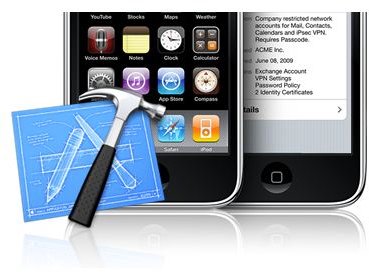How to Make iPhone Apps: The Complete Guide to Get You Started
This guide will tell you everything you need to know about making your own iPhone applications.
The Apple iPhone was launched in June 2007, and it was undoubtedly a great hit. About an year after that, in July 2008, Apple launched the iPhone Appstore which allowed independent developers to create their own applications using the iPhone SDK and upload them onto the Appstore to make money. This led to an explosion of mobile applications and a tremendous increase in the iPhone platform’s popularity.
There are more than 300,000 apps in the Appstore now and there have been more than 3 billion downloads. The Appstore has made many developers millionaires and spawned many startups and is still a lucrative option for new developers.
This article will guide you through the various tools you will need to use to create iPhone applications.
Getting Started
In order to create your own iPhone applications, you need to have certain tools and certain programming skills. Apple has made iPhone application development very easy and made the tools available to everyone at a small fee. However, the iPhone SDK is available only for Macs, not for PCs.
The iPhone SDK will work on any Intel based Mac running OS X Leopard (10.5.6 or later). It’s preferable to have a powerful Mac with lots of RAM.
Once, you have a Mac, you just need to Download the Apple iPhone SDK from https://developer.apple.com/iphone/ and install it on your Mac.
Just create an Apple ID for free and download the iPhone SDK.
To publish your application to the Appstore, you need to pay $99 and register to the Standard iPhone Developer program.
It will allow you to develop, test and distribute your application on the Appstore. It also gives you access to all the documentation, tutorials, videos and sample code that you will need.
It’s also preferable to have an actual device to test your application - an iPhone or an iPod Touch. Though the SDK includes a simulator to run your apps, it’s always better to try it out on the real thing before publishing it.
Recommended Books
There are some very good books which can help you with iPhone application development if you are not comfortable with the developer tutorials.
<strong>Beginning iPhone 3 Development: Exploring the iPhone by Apress</strong>
<strong>Head First iPhone Development - O’Reilly Media</strong>
Once you have all this stuff ready, you can start developing your own iPhone apps.
Before you start though, you should have at least some programming experience and knowledge of object oriented programming. The iPhone SDK and the Cocoa Touch Application Framework use Objective C - an object oriented version of C.
You can learn it from the iPhone OS Reference Library or by reading any Objective C development book.
The iPhone SDK and Other Tools
After installing the iPhone SDK on your Mac, just start up Xcode.
Xcode
From the Welcome Screen, create a New Project and select View Based Application from under the iPhone OS > Application tab.
Your application is divided into Classes, Other Sources, Resources, Frameworks and Products.
- Classes: It will hold all your Objective C code classes.
- Other Sources: It will hold the code classes that aren’t coded in Objective C, but some other language.
- Resources: This will hold all the resources you will need in your application like images, audio files, video files etc.
- Frameworks: This will hold the different frameworks and libraries that you will use in your application.
- Products: This will contain your compiled application.
Interface Builder
Interface Builder will be used to create Application interfaces for your application. It allows you to graphically create GUIs using some code and a library of UI elements which you can use. You can add elements like labels, buttons, menus, text fields, scroll bars, check boxes etc, which you can add directly. It uses the Cocoa Touch application framework. The interface builder files are stored as XIB files.
After your application has been coded and completed, you can test it on the built in iPhone Application Simulator which is bundled with the SDK.
Xcode also provides debugging tools which you can use to debug your applications.
These are the basic components of the SDK.
Besides these, there are some other tools that you might need:
Graphics and Design
You will need a good image editor to create the graphics and images for you application.
You could use either Adobe Photoshop, GIMP, Inkscape, Irfan View, Paint.NET etc.
Game Engines and Tools
There are many game engines which you can use to create games for the iPhone.
Some of the best known ones are Unity 3D, Cocos 2D, Bork 3D, Torque 2D, GameSalad, ShiVa Ston3d etc.
These are all the tools you will need to create your own iPhone application. After the development and testing process is finished, just upload your application to the iPhone Appstore. The approval process generally takes a week if there are no problems.
References
Image Credit: Image provided by author
